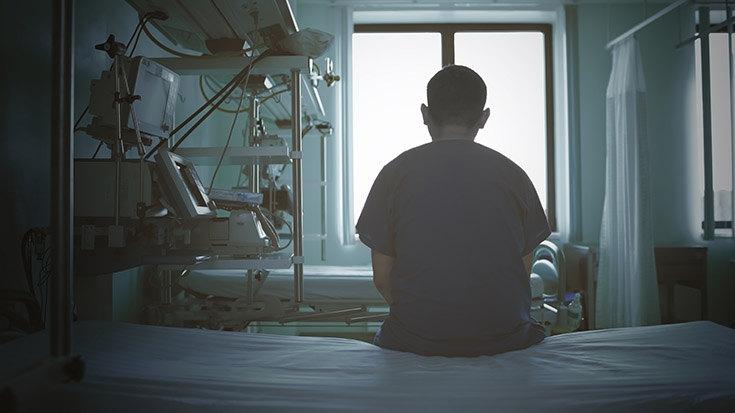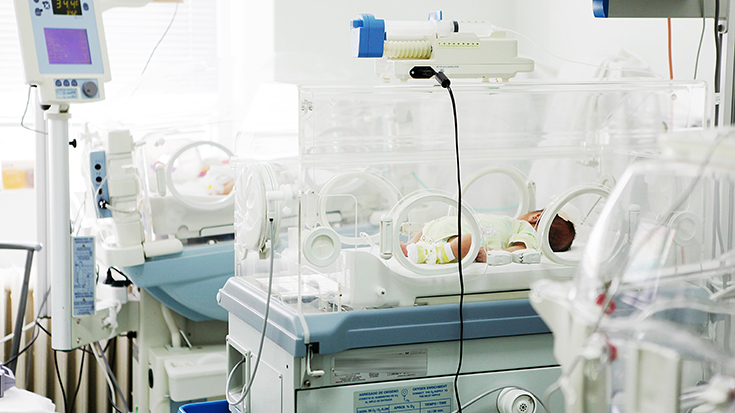
No. Well, yes, and no. Racism — not race — impacts medical outcomes. We still see the long term effect of racist policies like redlining on medical practice, such as vaccination rates in minoritized communities.1 Medical mistrust within minoritized populations dates back quite far, but since this article focuses on racism, let’s begin with Samuel Cartwright, M.D.
A Trip Back in Time: All Aboard!
In 1851, Dr. Cartwright published a paper in the New Orleans Medical and Surgical Journal titled, “Report on the Diseases and Physical Peculiarities of The Negro Race.”
In this article, he named a disease which described why enslaved Africans attempted to run away. Drapetomania, was classified as a mental condition that caused the mania that thwarted enslaved people from their plantations, ‘overseers’ or ‘masters.’2 Dr. Cartwright also named Dysaethesia Aethiopica, which described a mental condition that explained the lack of work ethic exhibited by many enslaved people.2 Both diagnoses were widely accepted throughout the medical community. Neither of these diseases were taught during my 20+ years of formal education. Instead, I became familiar while exploring root causes of the disparities we see today.
Stop One: Route Interrupted
Here is where we divert from our timeline to shed light on conditions that disproportionally impact Black communities. Literature suggests that African, African-American and/or Black people are more likely than other races to be prone to high blood pressure and diabetes, among other conditions.3-5 These conditions have plagued my elders for generations. Explanations that justify these correlations are difficult to identify. Why are African, African-American and/or Black people more prone to high blood pressure and diabetes? If it’s not genetic, what could it be? The simple answer is racism and culture.6-8 I’ll come back to this as we continue our journey on the timeline.
Rerouted: Redlining
In 1934, the United States government established the Federal Housing Administration (FHA) to encourage the purchase of homes by making loans affordable and improving housing standards. These benefits were rarely seen by women, elders, low-income families, and racial minorities.9 Discriminatory practices such as redlining, lowballing, and racial steering were common at the time.10 Redlining was the practice of drawing a red line around neighborhoods on a map to identify areas where loans may be refused.10 Redlined neighborhoods were heavily populated with communities of color. The practice of redlining perpetuated racial segregation by effectively prohibiting racial minorities from purchasing homes in predominately white neighborhoods.9 Harmful effects of redlining can be observed beyond purchasing a home as business owners, medical providers, and public services may divest from neighborhoods labeled “undesirable”.
Stop Two: Connection of Two
At this stop, we learn how high blood pressure and diabetes relate to racism and culture. Both high blood pressure and diabetes can be traced back to redlining and enslavement, and both have a direct impact on culture. Enslaved people were given leftovers from slaughtered animals or whatever the overseers deemed undesirable. Often those were items like chitterlings, neck bones, and pig feet. Despite their high fat content and minimal flavor, enslaved people tried to make them palatable which often meant using heavy salt and seasoning. As years passed, cooking and sharing of meals in communities of color became tradition and deeply engrained in our culture. In fact, foods bursting with flavor and seasoning (beyond a pinch of salt and a dash of pepper) are considered the norm. Once unwanted by overseers, many foods my ancestors prepared are now considered delicacies. Intergenerational trauma, tradition, and culture have had a profound impact on diet.
Now, let’s tie in redlining. Grocery stores are not absolved from this practice; supermarket redlining occurs when grocers close stores in low-income areas and relocate to the suburbs.11 As chain supermarkets entered communities, many small, family owned grocers were forced to close. Over time, supermarket redlining drove these chain supermarkets to the suburbs and many urban and low-income communities were left without accessible options.11 The combination of limited grocery and public transportation options greatly impacted access to fresh meats, produce, and other food items for people living in redlined neighborhoods. This phenomenon created food deserts where at least one-third of a low income population is at least one mile from a grocery store.11 Food deserts are still common in both urban and rural communities throughout the country. If the foods people have access to primarily come from convenience stores and gas stations, they are likely filled with preservatives, salt, and sugar. It is uncommon to find fresh fruits, vegetables, grains, or meats at these locations beyond a banana or apple. Choosing between high salt, high sugar, or high preservatives over time will impact health.
More effects of redlining can be found when we look to the public services available to a community. When bus routes change or become less frequent due to divestment in public and social services, residents are left without reliable access to essential needs like medical care or nutrition. For someone working full time, reaching a medical office or grocery store after work may be impossible when the bus schedule changes and no longer operates past the early afternoon. Although redlining was formally prohibited decades ago, the effects of these policies are still seen today. For many residents, medical care, grocery stores, and other public services are quite literally out of reach.
Rerouted: Vaccination
In 2021, the COVID-19 vaccination was made available to people throughout the country. As data rolled in, we learned that vaccination rates among people of color were down everywhere.1 Media coverage highlighted vaccine skepticism without addressing root causes.12 While substantial skepticism exists in communities of color, it stems from centuries of transgressions by the government and people we are encouraged to trust, like medical professionals. As vaccines were rolled out throughout minoritized neighborhoods, people of color were photographed and exploited in hopes that such photographic representation would persuade others to get vaccinated. Rates of vaccination in communities of color remained low, however, efforts to increase them often didn’t reach the intended demographic. Data from the City of Chicago indicate that most people who died from COVID-19 were from South Side neighborhoods that are predominately communities of color. Despite substantial community impact in communities of color, vaccine distribution disproportionally occurred in the Loop and North suburbs which are predominately white.13 Recent efforts to distribute vaccine more equitably have gotten more vaccines into the arms of people of color, who are overrepresented in low-wage and essential positions.14
Population demographics in Idaho are 93% white, 1.7% Indigenous, 1.6% Asian, and 0.9% Black.15 Idaho has one of the lowest vaccination rates in the country and vaccine demographic reporting is left to local municipalities.16 Although vaccine tracking can be difficult, community interventions can succeed. In mid-2021, trusted community organizers partnered with a local health system to host a series of vaccination clinics for communities of color — and people showed up en masse. We promised no cameras, media coverage, and a Black medical team. We provided soul food, music, hand-holding, free transportation, and live translators. When asked what made them come, people overwhelmingly shared that they didn’t want to be on TV or they wanted the opportunity to be cared for by a Black medical team. The clinics quickly turned into impromptu cultural events that nourished souls and bodies while answering questions in a safe environment.
Prepare for Arrival
The historical treatment of people of color in America and continued examples of systemic racism and oppression have led to the distrust of medical professionals. We must continue to do the work — with every patient, everyday — to regain that trust. The examples of how racism impacts medical outcomes are countless and extend far beyond this article. The tragedies of the Tuskegee Experiment, Henrietta Lacks, and J. Marion Sims only scratch the surface of medical racism in this country.17 I implore you to research these stories and continue to do the hard work of making our healthcare system a place where all are welcome, valued, and celebrated. As respiratory therapists, every interaction we have with a person living with lung disease is an opportunity to do just that. Ask questions beyond the bare minimum and find out what brings them joy. Always remember that a patient is a person before a person is a patient. I promise it’ll pay off.
Don’t Forget Your Bag!
Race is not a health disparity. Racism is. As respiratory therapists, try to find out why race is a necessary field when completing spirometry. Interrogate guidelines and policies when they don’t make sense. Take time to learn about people like Henrietta Lacks, J. Marion Sims, John Brown, and Dr. Thomas Hamilton. Review studies that illuminate the racial disparities in healthcare and consider how you can change those outcomes. We all can do better. We have to.
References
- Gayle HD, Childress JF. Race, Racism, and Structural Injustice: Equitable Allocation and Distribution of Vaccines for the COVID-19. Am J Bioeth. 2021;21(3):4-7. doi:10.1080/15265161.2021.1877011
- Cartwright, S.A. Diseases and Peculiarities of the Negro Race. DeBow’s Review. 1851;11 (1). 64–74. https://pbs.org/wgbh/aia/part4/4h3106t.html
- Lackland DT. Racial differences in hypertension: implications for high blood pressure management. Am J Med Sci. 2014;348(2):135-138. doi:10.1097/MAJ.0000000000000308
- Flack JM, Hamaty M. Difficult-to-treat hypertensive populations: focus on African-Americans and people with type 2 diabetes. J Hypertens Suppl. 1999;17(1):S19-S24.
- Bancks MP, Kershaw K, Carson AP, Gordon-Larsen P, Schreiner PJ, Carnethon MR. Association of Modifiable Risk Factors in Young Adulthood With Racial Disparity in Incident Type 2 Diabetes During Middle Adulthood. JAMA. 2017;318(24):2457-2465. doi:10.1001/jama.2017.19546
- Bacon KL, Stuver SO, Cozier YC, Palmer JR, Rosenberg L, Ruiz-Narváez EA. Perceived racism and incident diabetes in the Black Women’s Health Study. Diabetologia. 2017;60(11):2221-2225. doi:10.1007/s00125-017-4400-6
- Ogunwole SM, Golden SH. Social Determinants of Health and Structural Inequities-Root Causes of Diabetes Disparities. Diabetes Care. 2021;44(1):11-13. doi:10.2337/dci20-0060
- Ashoorkhani M, Majdzadeh R, Gholami J, Eftekhar H, Bozorgi A. Understanding Non-Adherence to Treatment in Hypertension: A Qualitative Study. Int J Community Based Nurs Midwifery. 2018;6(4):314-323.
- Fritz MJ. Federal Housing Administration (FHA). Encyclopedia Britannica. 2019. https://britannica.com/topic/Federal-Housing-Administration
- Consumer Compliance Handbook. Federal Fair Lending Regulations and Statues: Fair Housing Act. Federal Reserve System. https://federalreserve.gov/boarddocs/supmanual/cch/fair_lend_fhact.pdf
- Zhang M, Debarchana G. Spatial Supermarket Redlining and Neighborhood Vulnerability: A Case Study of Hartford, Connecticut. Trans GIS. 2016;20(1):79-100. doi:10.1111/tgis.12142
- Schulte S. Chicago COVID: Delta variant leads some who were vaccine hesitant to reconsider. ABC News. 2021. https://abc7chicago.com/chicago-covid-vaccine-hesitancy-delta-variant-vaccination-rate/10917901/
- South Side Weekly. Which Chicagoans Are Getting Vaccinated? A Twitter Bot Updated Daily. South Side Weekly. 2021. https://southsideweekly.com/chivaxbot/
- Bibbins-Domingo K. This Time Must Be Different: Disparities During the COVID-19 Pandemic. Ann Intern Med. 2020;173(3):233-234. doi:10.7326/M20-2247
- United States Census Bureau. Quick Facts Idaho. 2019. https://census.gov/quickfacts/ID
- Carlsen A, Huang P, Levitt Z, Wood D. How is the COVID-19 vaccination campaign going in your state? NPR. 2021. https://npr.org/sections/health-shots/2021/01/28/960901166/how-is-the-covid-19-vaccination-campaign-going-in-your-state
- Bajaj SS, Stanford FC. Beyond Tuskegee – Vaccine Distrust and Everyday Racism. N Engl J Med. 2021;384(5):e12. doi:10.1056/NEJMpv2035827
Email newsroom@aarc.org with questions or comments, we’d love to hear from you.
















